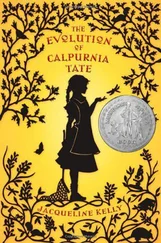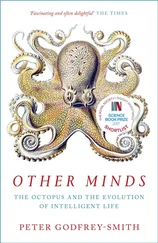We have already said that Classical culture was Ionian. This means that the mixture that created it took place on the shores of the Aegean Sea, chiefly among people who spoke the Ionic dialect of Greek. This means that it was a synthesis from the activities of a relatively small number of persons in a relatively small area. It also means, as is generally true when one civilization descends from a predecessor, that the peripheral area of Cretan civilization became the core area of Classical civilization.
The elements that mixed to form Classical society were at least four: (1) Minoan; (2) Indo-European; (3) Mesopotamian; and (4) Semitic. None of these, except perhaps the last, was a direct influence; the others were indirect, filtered through intermediaries. The Minoan influence came through the Mycenaean Age, that is, in the Greek language and with heroic and warlike elements replacing the feminist and pacifist elements of Minoan. The Indo-European was also diluted by coming through the Mycenaean Age rather than as the direct influence of a warrior people such as we find in the Dorian Greeks. This means that the rationalist and individualist tendencies found in the Indo-Europeans were intensified by the weakening of the social and tribal beliefs usual among a more primitive people. This influence was passed on to the Greeks, largely through Homer. The Mesopotamian contribution came across Anatolia (where it picked up all kinds of dark superstitions and irrational rites), as well as through the Phoenicians. The Semitic influence also came by way of the Phoenicians, which means that it came through a practical, hardheaded, unimaginative, and businesslike people.
It would be a difficult task to enumerate what Greek culture owed to each of these four; it would also be misleading, because the Ionians took each element, modified it, and merged it into a new synthesis. From the Mesopotamians came much science and astronomy, weights and measures (such as the twelve-hour day and night, and the use of sixty for fractional parts), and considerable technology. From the Indo-European came many pastoral elements, including the religious dominance of a sky god (dyas = deus = Zeus); a patriarchal and masculine-dominated social system; extreme emphasis on honor, competitiveness, heroism, and war; and above all, rationalism. The last of these is so important that it deserves more detailed consideration.
There can be little doubt that the rationalism of the Greeks, which became one of the general qualities of Classical culture, was derived from their Indo-European heritage. The same quality is found among the early Persians (for example, in the Zoroastrian religion) in an even more definite way, and the Persians are the only Indo-European group, on whom we have adequate information, that was less culturally mixed than the Greeks. Of the other Indo-European groups, the Mitanni were more purely Indo-European, but we know very little about them; the Hittites and Aryans were subjected to great cultural mixture, and we have inadequate information on them. The early Romans were much less clearly Indo-European than the Greeks, were much less rational, and our information is much less satisfactory. The correlation, so far as our knowledge goes, between degree of Indo-European influence in a culture and the rationalism in the culture seems fairly close.
We may concede, then, that Greek rationalism was Indo-European in origin, but this does not explain why the Indo-Europeans had this tendency. A somewhat similar inclination is to be found among the Semites, and there too its degree seems to be correlated with the degree of purity of the Semite culture. The closer any Semite people were to their original Flatland pastoralism, the more pronounced the degree of rationalism in their culture. The Arabs, who were the most pastoral of all the Semites of which we have adequate knowledge, seem to have been the most rationalist of the Semite migrants out of the Arabian Flatland into the vision of history. Similarly, the Hebrews, who were more pastoral than the other Canaanites, were considerably more rational than these others. In fact, the Canaanites of the Levant had a very nonrational culture, so that the emergence of the Hebrews as a separate social group among the Canaanites was, to a considerable extent, marked by the development of a more rational and more historical outlook, as well as by monotheism. The generally irrational character of Canaanite society probably arose from its extensive cultural mixture with local agricultural peoples and with immigrant Alpine peoples, such as the Hurrians.
The rationalism of the Indo-Europeans appears in their basic thinking habits. Its most notable feature, of course, is the effort to find explanations of events in terms understandable to our conscious mental processes. This leads to pervasive but less fundamental characteristics, such as the tendency to polarize continua that, in turn, leads to the use of two-valued logic in explanations. This last characteristic shows most clearly in the acceptance of the principle of contradiction (the essential feature of any system of two-valued logic) in the analysis of observations (in addition to the already mentioned inclination to analysis itself). The earlier civilizations, such as Mesopotamian and Egyptian, were not analytical and had no tendency to seek logical explanation. It would be incorrect to say that they were illogical, for this might indicate that they violated a logical system of which they were aware. Rather we should say that they were mythological. This means that they did not seek explanation by analysis in order to obtain logical sequence back to a "cause"; rather they found explanation in a story, as we still do in children's tales (like "How the Elephant Got His Trunk").
In our own development toward logical explanation, we find contributions from both the Hebrews and the Indo-Europeans. The Hebrews took the first great step toward the creation of our modern intellectual processes by turning from a mythological to a logical attitude toward the universe. They insisted on a rigid distinction between God and man, between past and future, between life and death, between male and female (especially in regard to deity), between man and nature, between the individual and the group, and between the righteous and the unrighteous. These logical distinctions were not made by earlier peoples, as they are not made, for example, by the Hindus. They were largely destroyed among the other Canaanites because of the powerful influences these received from the Mesopotamian, Hurrian, and Neolithic Garden cultures.
Similar rationalism is found among the Indo-Europeans. We might explain this quality as one of the attributes of Flatland pastoralism. Or we might attribute it to the grammatical structure of Indo-European languages and, in that way, trace it back to the common linguistic ancestor of Indo-European and Semite. For Indo-European grammar, with its categories of gender, its sharp distinction of person and number, and its great emphasis on chronological tense, must impress upon any child who learns it a certain amount of logical attitude toward experience. This would be quite different from the experience of the Japanese child, whose language emphasizes in its grammar relative class levels, or of the young Bantu speaker, who has little time emphasis (lacking any future tense), but divides everything in the universe into a score or so of basic qualitative classes.
Of course, we might abandon this rather Platonic effort to explain the logical quality of Greek thought by adopting, instead, the Sophist argument that there is nothing really logical about Greek thinking or Indo-European languages but that we simply call them logical because it is what we are used to in our own culture derived from them. If we do this, it will still be permissible to say that these qualities came into the Greek mixture from the Indo-European element in that mixture. It is obvious that the Indo-European element also contributed to Classical culture a large number of material traits. These included horses and war chariots, the use of flowing garments fastened by pins (the toga), iron weapons (from the Hittites by way of the Dorians), the wearing of beards, the megaron-style house, the social inferiority of women, and other features.
Читать дальше










